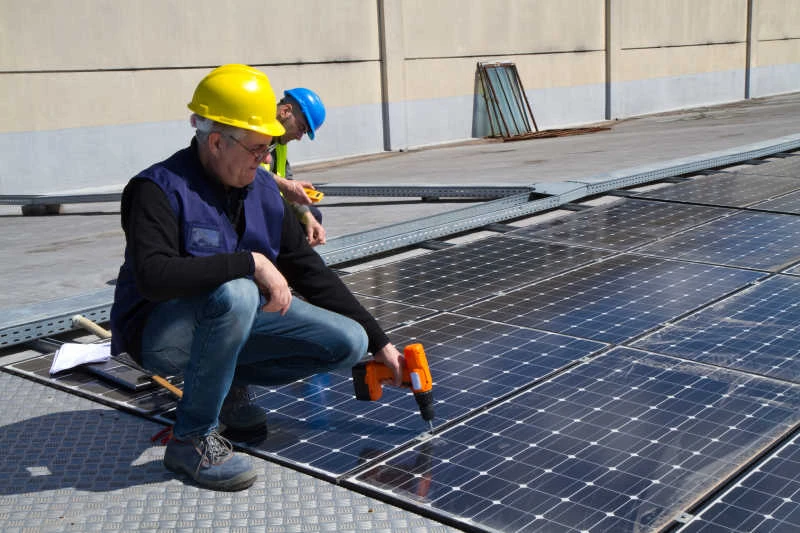pv cells
The Future of Energy Understanding PV Cells
In our quest for sustainable energy solutions, photovoltaic (PV) cells have emerged as a leading technology in harnessing solar energy. These cells convert sunlight directly into electricity, making them a cornerstone of renewable energy systems and a vital component in the global shift towards greener energy sources. This article delves into how PV cells work, their applications, benefits, challenges, and their potential impact on our energy future.
How PV Cells Work
PV cells operate on the principle of the photovoltaic effect. When sunlight strikes the surface of a PV cell, it excites electrons in the semiconductor material (commonly silicon) that comprises the cell. This excitement generates electron-hole pairs, creating a flow of electricity. The electrical current produced can be harnessed directly to power devices, or it can be stored in batteries for later use. A typical PV cell consists of several layers the top layer is designed to absorb sunlight, while the bottom layer conducts electricity.
Applications of PV Cells
PV cells are incredibly versatile and can be deployed in various applications. The most visible use of PV technology is in solar panels mounted on residential rooftops, where they convert sunlight into electricity for home use. Additionally, large-scale solar farms utilize thousands of PV panels to generate substantial amounts of electricity, which can be fed into the grid, supporting municipal and industrial energy demands.
Beyond large installations, PV technology is also employed in off-grid applications, such as powering water pumps in rural areas or providing electricity to remote telecommunications equipment. Additionally, portable solar chargers for electronic devices have gained popularity, offering users a sustainable energy source on the go. The integration of PV cells into building materials, such as solar shingles and windows, points towards a future where energy generation is embedded in our urban infrastructure.
Benefits of PV Cells
The advantages of PV cells are substantial and multifaceted. Firstly, they provide a clean and renewable source of energy, significantly reducing greenhouse gas emissions compared to fossil fuel-based power generation. This reduction is crucial in the fight against climate change. Moreover, solar energy is abundant and inexhaustible, with the sun providing more energy in one hour than humanity uses in an entire year.
pv cells

Economically, the cost of PV systems has plummeted in recent years due to advances in technology and manufacturing processes, making solar energy more accessible to a broader audience. Additionally, various government incentives and subsidies further support the adoption of PV technology, encouraging residential and commercial installations.
Furthermore, PV cells contribute to energy independence. By generating electricity locally, individuals and communities can reduce their dependence on centralized power grids, buffering against fluctuating energy prices and enhancing energy security.
Challenges Facing PV Cells
Despite their many benefits, PV cells face several challenges. The initial investment for a solar energy system can be substantial, although the long-term savings often justify the expense. Moreover, the efficiency of PV cells varies, typically ranging from 15% to 22% for commercially available panels. Research is ongoing to develop more efficient cells that can convert a greater percentage of sunlight into electricity.
Another significant challenge is the intermittent nature of solar energy generation. Since sunlight is not available at night and can be hindered by weather conditions, energy storage systems (like batteries) are crucial for ensuring a steady energy supply. This adds another layer of cost and complexity to solar energy systems.
Additionally, the environmental impact of manufacturing and disposing of PV cells cannot be overlooked. While they offer substantial emissions reductions during their operational life, the production process involves the use of hazardous materials, and responsible recycling methods need to be developed to minimize waste.
Conclusion
In conclusion, photovoltaic cells represent a pivotal technology in the transition to a sustainable energy future. They harness the abundant energy from the sun, offering clean, renewable power while contributing to energy independence and reducing greenhouse gas emissions. While challenges such as efficiency, cost, and environmental concerns persist, ongoing advancements in technology and growing public awareness will likely propel the further adoption of PV cells. As we strive for a sustainable planet, understanding and investing in this technology will be essential in shaping the future of energy. With the right support, PV cells can play a crucial role in creating a more sustainable and resilient energy landscape for generations to come.
-
String Solar Inverter: The High-Efficiency Solution for Smart Solar EnergyNewsJul.14,2025
-
Revolutionizing Rooftop Energy with the Power of the Micro Solar InverterNewsJul.14,2025
-
Power Independence with Smart Off Grid Solar Inverter SolutionsNewsJul.14,2025
-
On Grid Solar Inverter: Powering the Future with Smart Grid IntegrationNewsJul.14,2025
-
Monocrystalline Solar Panels: High-Efficiency Power for the Future of Clean EnergyNewsJul.14,2025
-
Bifacial Solar Panel: A Smarter Investment for Next-Generation Energy SystemsNewsJul.14,2025







